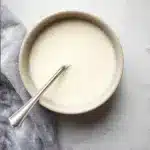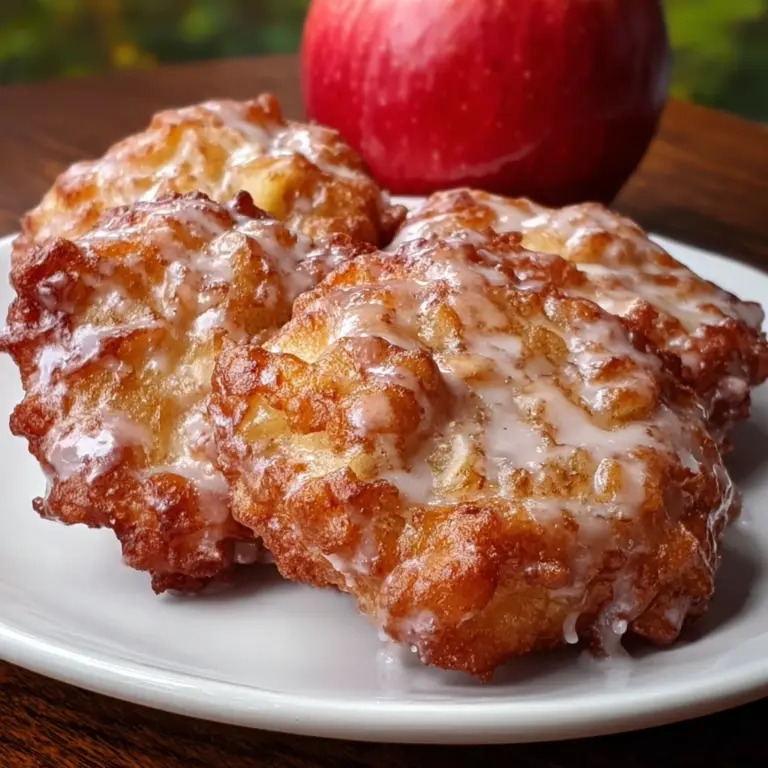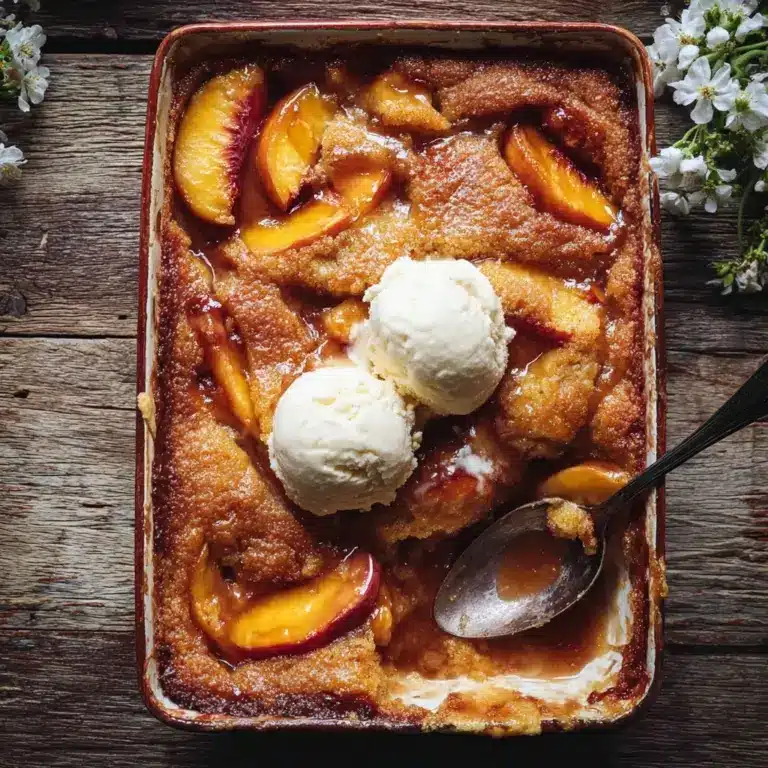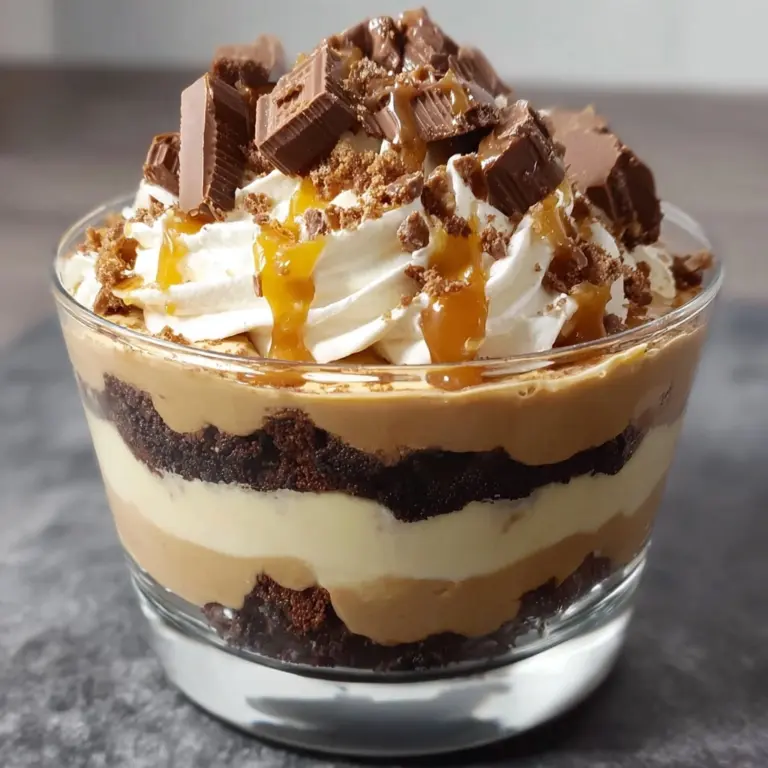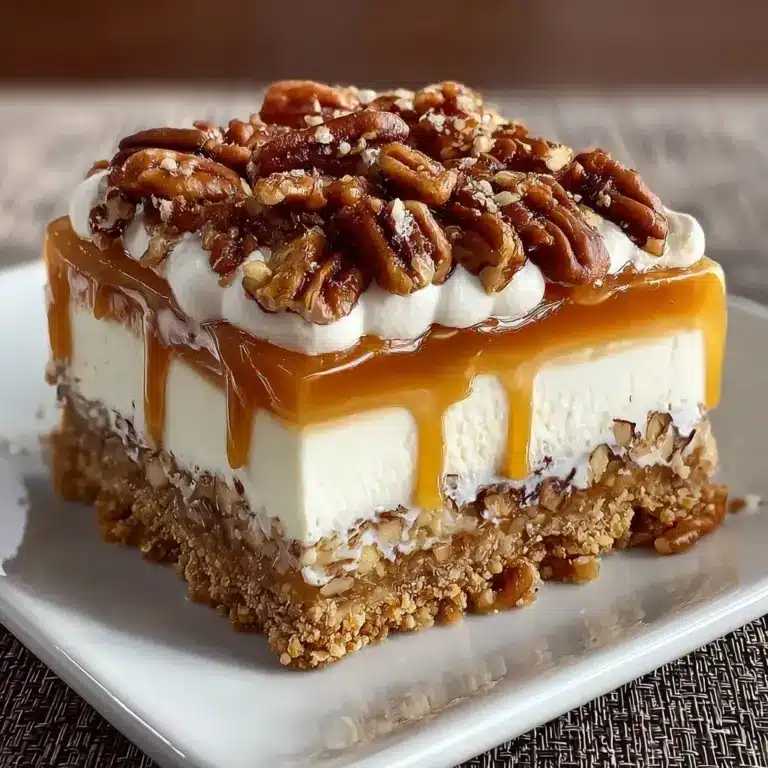How to Make Buttermilk at Home Recipe
If you’ve ever started a recipe only to realize you’re missing buttermilk, you’re about to learn a kitchen secret that will change how you bake forever! How to Make Buttermilk at Home is surprisingly easy and can save the day when you need it most. With just two simple ingredients and a couple of minutes, you can create a tangy, creamy buttermilk substitute that will bring unbeatable flavor and tenderness to your pancakes, biscuits, or any dish calling for buttermilk. This quick trick means you never have to skip another recipe or make a last-minute store run again!
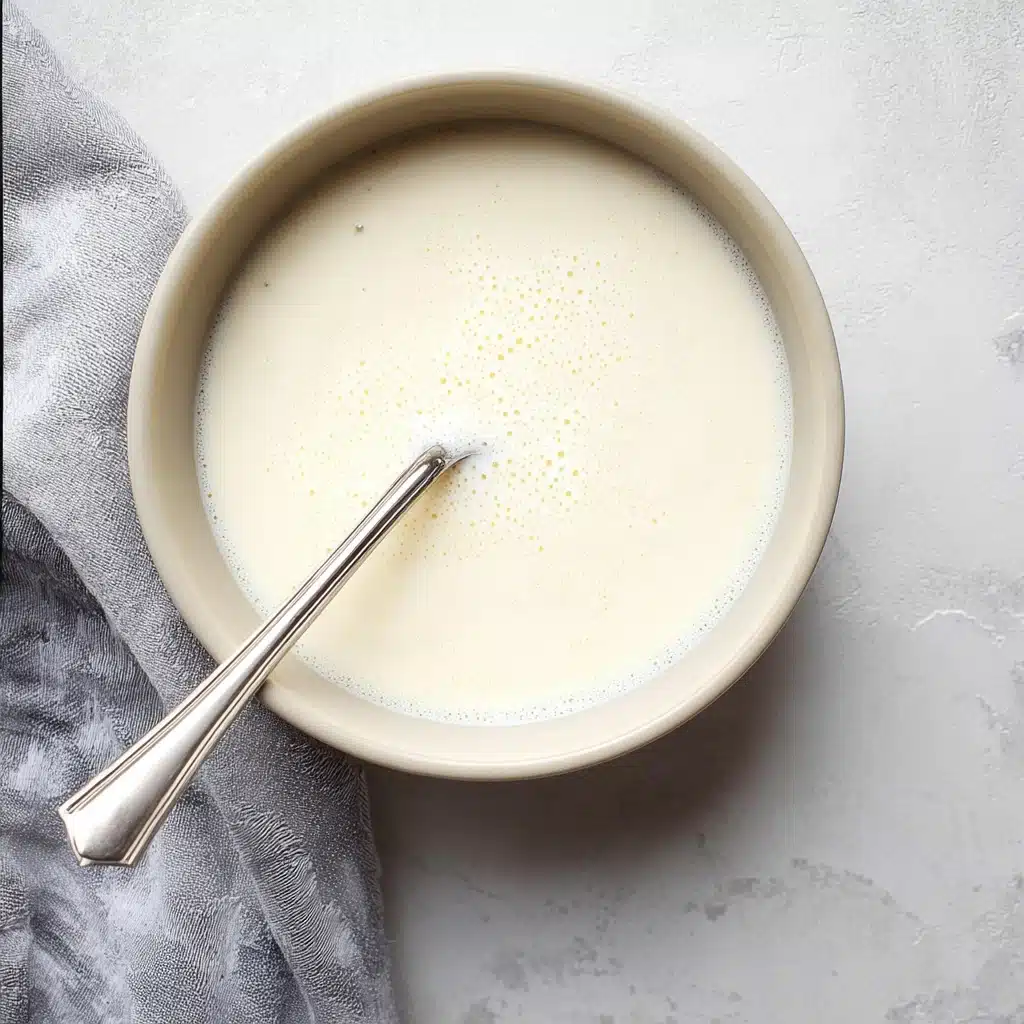
Ingredients You’ll Need
The beauty of learning how to make buttermilk at home is how incredibly simple and accessible the ingredients are. Each component plays an important role in replicating the classic taste and gentle acidity of traditional buttermilk, guaranteeing your baked goods turn out just right.
- Freshly squeezed lemon juice or white vinegar: Adds the perfect amount of acidity to react with the milk and create that signature tangy flavor and gentle thickness.
- Milk of your choice (dairy or non-dairy): The base for your homemade buttermilk; use whole, low-fat, or any plant-based milk depending on your dietary preference and the richness you’d like in the final product.
How to Make How to Make Buttermilk at Home
Step 1: Measure and Add the Acid
Start by measuring 1 tablespoon of freshly squeezed lemon juice or white vinegar and pour it into a medium-sized mixing bowl or liquid measuring cup. This acidic ingredient is the magic that transforms everyday milk into buttermilk, and you can use whichever one you prefer or have on hand.
Step 2: Add the Milk
Pour 1 cup of your chosen milk into the same bowl. Whether you stick to traditional cow’s milk or opt for a non-dairy substitute like almond or oat milk, each will work in this process. Combining the milk with the acid is where the transformation truly begins!
Step 3: Stir and Let It Sit
Gently stir the mixture well with a spoon or whisk until everything is evenly combined. Now, here comes the easiest part: Let the mixture sit undisturbed at room temperature for about 5 minutes. You’ll notice the milk starts to curdle slightly and thicken, taking on the distinct tang and texture of classic buttermilk.
Step 4: Ready to Use
After five minutes, your homemade buttermilk is ready to use in any recipe that calls for it. Give it a quick stir before measuring out the amount you need. That’s all it takes to master how to make buttermilk at home—no fancy equipment or long waiting times needed!
How to Serve How to Make Buttermilk at Home
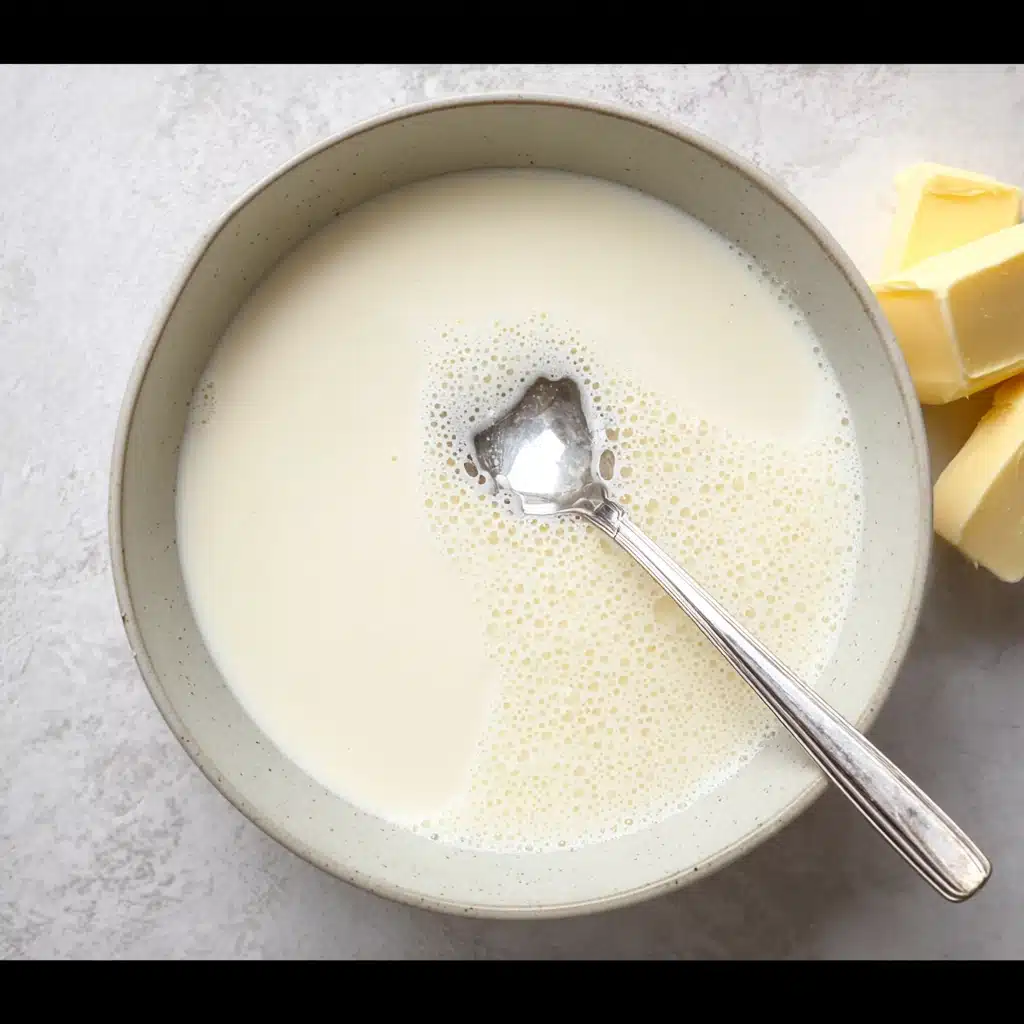
Garnishes
Your homemade buttermilk can be poured into a pretty glass jar and finished with a small wedge of lemon on the rim for a bright, inviting look. When used in recipes like pancakes or biscuits, a sprinkle of fresh herbs, a pat of butter, or a swirl of honey or jam adds a special finishing touch that makes every bite feel a little more indulgent.
Side Dishes
Buttermilk’s versatility makes it a fantastic companion to many dishes. Use your fresh batch to whip up fluffy pancakes, tender scones, or crispy fried chicken, then pair these mains with side dishes like fresh fruit salads, crispy roasted potatoes, or buttery cornbread. Every meal becomes a comforting treat when buttermilk is involved!
Creative Ways to Present
Fill small glass bottles with your homemade buttermilk and set them at each place setting for a charming brunch vibe. You can also store it in a mason jar with a handwritten label, giving your kitchen a cozy, farmhouse feel. For special occasions, pour it into mini pitchers and let guests add their own to recipes and beverages for an interactive twist.
Make Ahead and Storage
Storing Leftovers
Once you’ve tackled how to make buttermilk at home, it’s nice to know you can prep a little extra for later. Store any unused buttermilk in a clean, covered container in the refrigerator. It will keep for up to one week, maintaining its tangy flavor and helpful acidity for baking and cooking on your schedule.
Freezing
Yes, you can freeze homemade buttermilk! Pour leftovers into ice cube trays, freeze until solid, then transfer the cubes to a freezer bag for up to three months. When you’re ready to use, simply thaw as many cubes as needed—perfect for spur-of-the-moment baking sessions or small-batch recipes.
Reheating
Buttermilk is best used straight from the fridge or after it’s thawed at room temperature, but avoid microwaving as sudden heat can alter its texture. If you’ve frozen it, let the buttermilk cubes thaw in your refrigerator or on the counter, then stir well before using. Your recipes will turn out beautifully just like with freshly made buttermilk.
FAQs
Can I use any type of milk to make homemade buttermilk?
Absolutely! While whole dairy milk produces the richest and creamiest results, low-fat, skim, or plant-based milks like almond, soy, or oat will also thicken and curdle when combined with acid. Choose whichever milk suits your dietary preferences or recipe needs.
Why does the recipe call for lemon juice or white vinegar?
Both lemon juice and white vinegar provide just the right amount of acidity to replicate traditional buttermilk’s tangy flavor and signature texture. They also trigger the necessary chemical reaction in baked goods, tenderizing flours and activating leavening agents for extra softness and rise.
Can I use apple cider vinegar or another acid instead?
Yes, apple cider vinegar is a great alternative and lends a subtle fruity note that works well in most recipes. Avoid stronger flavored vinegars like balsamic, as their taste may overpower your homemade buttermilk or baked goods.
What if my homemade buttermilk doesn’t look very thick?
Homemade buttermilk can be slightly thinner than store-bought, especially with lower-fat or non-dairy milk, but it’s just as effective in recipes. Rest assured, it still brings the same tenderizing acid and flavor your baked goods need for the perfect crumb.
Does homemade buttermilk taste the same as store-bought?
While the flavor is extremely close, homemade buttermilk is often fresher and more vibrant. Plus, you can adjust the tanginess by using more or less acid, which means you get a just-right flavor every time.
Final Thoughts
Now you know just how easy it is to master how to make buttermilk at home! Give it a try, save yourself an extra store trip, and enjoy bakery-worthy results in your own kitchen. There’s nothing like the satisfaction of seeing your homemade buttermilk transform everyday recipes into something truly special.
PrintHow to Make Buttermilk at Home Recipe
Learn how to easily make your own buttermilk at home using just two simple ingredients. This quick homemade buttermilk recipe is perfect for baking or cooking when you’re in a pinch.
- Prep Time: 5 minutes
- Cook Time: 0 minutes
- Total Time: 5 minutes
- Yield: 1 cup 1x
- Category: Beverage
- Method: Mixing
- Cuisine: American
- Diet: Vegetarian
Ingredients
Ingredients:
- 1 tablespoon freshly squeezed lemon juice or white vinegar
- 1 cup milk of your choice (dairy or non-dairy)
Instructions
- Pour the milk into a bowl. Add 1 tablespoon of lemon juice or vinegar to the milk.
- Stir well to combine, then let it sit for about 5 minutes. The milk will begin to curdle and become slightly acidic, mimicking the tangy taste and texture of buttermilk.
- Use this homemade buttermilk in your recipe as needed. Enjoy!
Nutrition
- Serving Size: 1 tablespoon
- Calories: 12 kcal
- Sugar: 1g
- Sodium: 10mg
- Fat: 0.5g
- Saturated Fat: 0.3g
- Unsaturated Fat: 0.2g
- Trans Fat: 0g
- Carbohydrates: 1.5g
- Fiber: 0g
- Protein: 1g
- Cholesterol: 1mg
Keywords: Buttermilk, Homemade Buttermilk, Buttermilk Recipe

